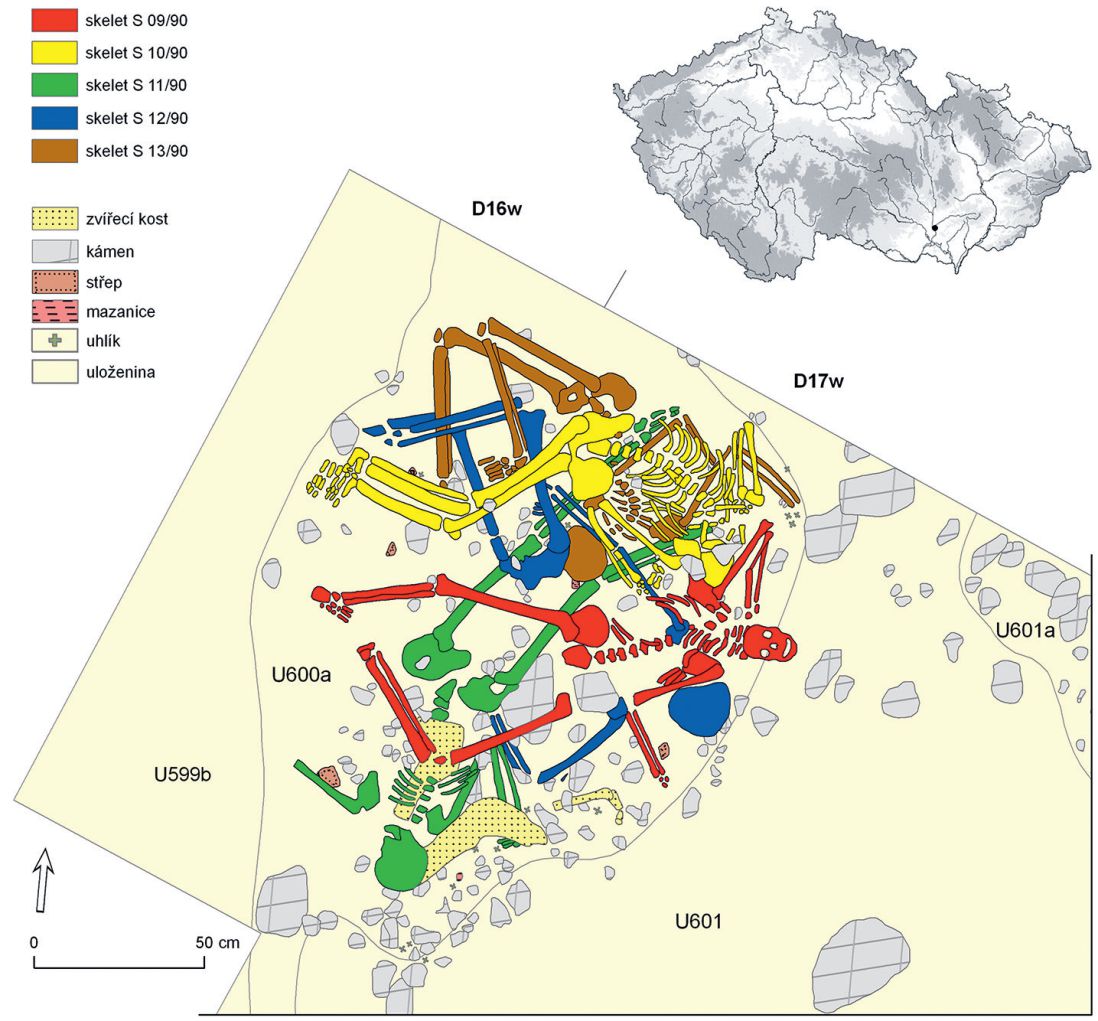Nové poznatky o stravě mužů z kumulace lidských ostatků K7/90 na Cezavách u Blučiny v mladší době bronzové
DOI:
https://doi.org/10.35686/AR.2019.10Klíčová slova:
mladší doba bronzová, rekonstrukce stravy, stabilní izotopy, síra, mikroabraze zubůAbstrakt
Příspěvek zpřesňuje a rozšiřuje informace o stravě pěti dospělých mužů z kumulace lidských ostatků K7/90 velatické fáze kultury středodunajských popelnicových polí v lokalitě Cezavy u Blučiny. Vzhledem ke špatné zachovalosti kosterního materiálu byla získána izotopová data od čtyř z pěti jedinců a ze čtyř vzorků fauny. Původní výsledky izotopové analýzy publikované v roce 2012 naznačovaly významnou roli živočišné složky potravy s potenciálním podílem mořských ryb. Nová měření izotopových hodnot síry a doměření hodnot komparativního souboru zvířat z dané lokality však prokázala, že ryby – ani mořské, ani sladkovodní – významnou roli v jídelníčku nehrály. Také maso a mléko suchozemských zvířat bylo spíše doplňkem stravy dotyčných osob, která byla založena hlavně na rostlinách. Ve stravě rostlinného původu hrálo významnou roli proso, jehož konzumaci je možné prokázat díky specifickým hodnotám stabilních izotopů uhlíku. Podle výsledků kvantitativního modelu rekonstrukce stravy proso u dvou ze čtyř jedinců tvořilo až kolem 50 % konzumované potravy. To potvrzuje dosavadní výsledky archeobotaniky, ukazující na podstatnou roli prosa v mladší době bronzové. V rámci revize předchozích antropologických určení se pomocí bukálních mikroabrazí zubů definovalo přesněji složení a konzistence stravy. Metodou analýzy přírůstků zubního cementu (TCA) se podařilo upřesnit biologický věk u dvou mužů v době jejich úmrtí.
Stažení












